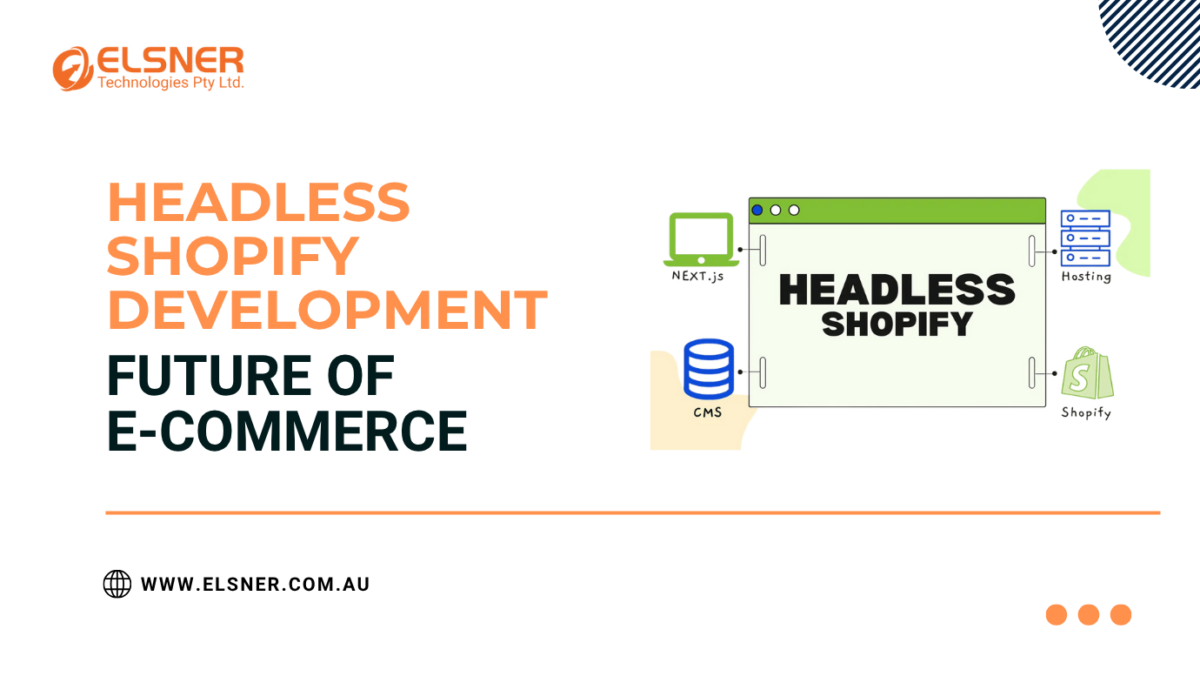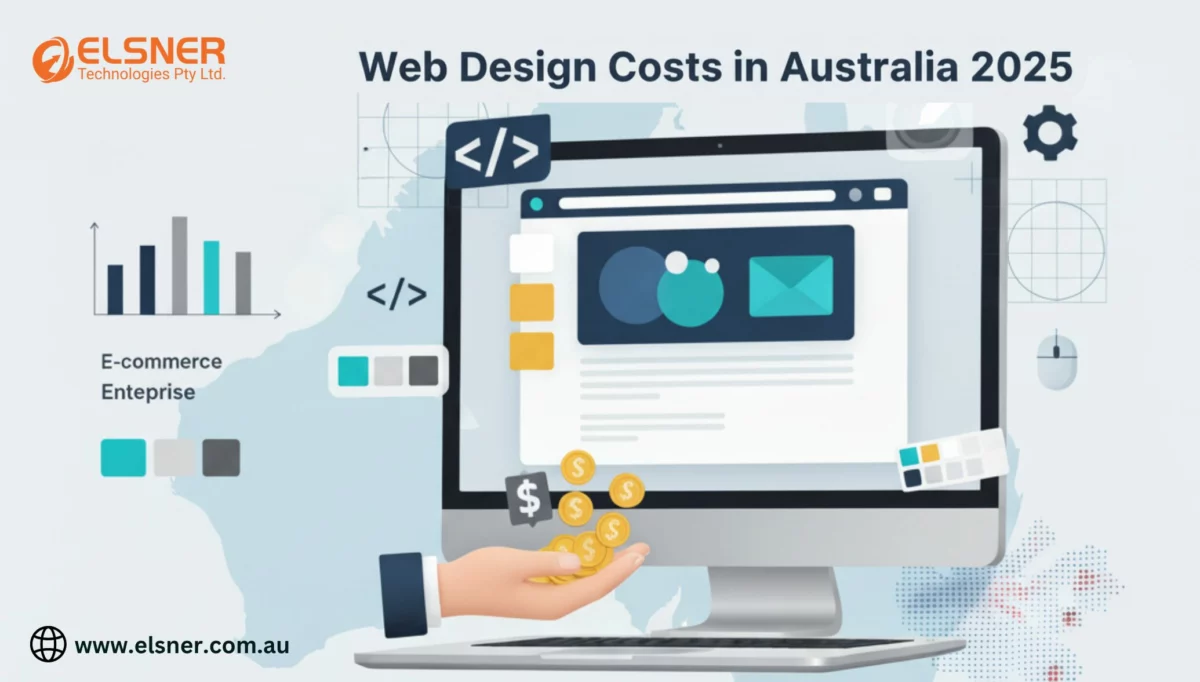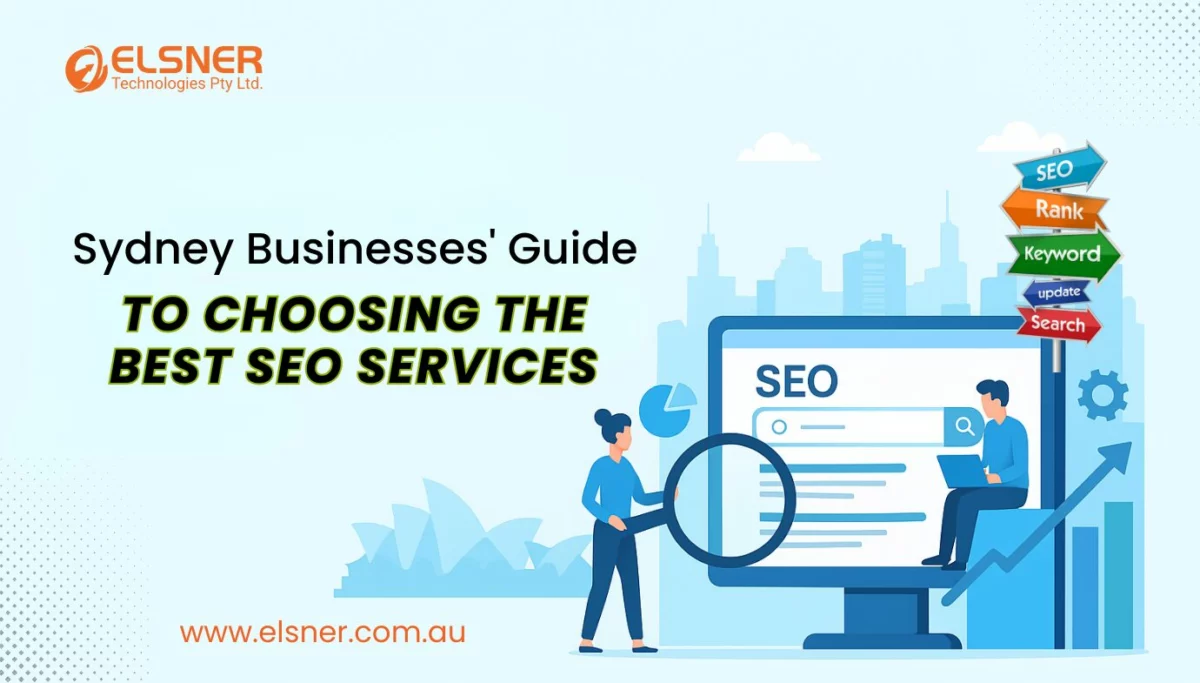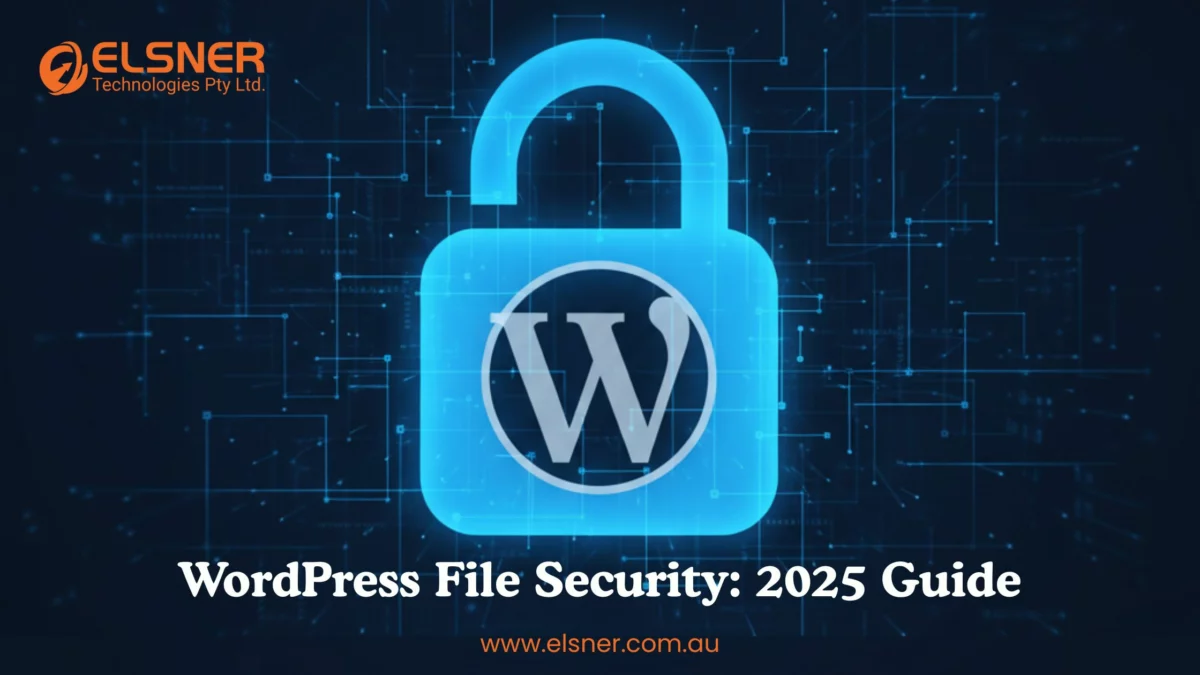Headless Shopify Development: The Future of E-commerce Architecture
ShopifyIn the constantly changing world of ecommerce, speed, agility, and user experience reign supreme. While online stores compete to track the growing expectations of customers, classic monolithic ecommerce platforms are beginning to show their limitations. Hence, let us become familiar with Headless Shopify Development—a new approach to business that’s transforming the online landscape, and one that Shopify website developers are actively adopting to deliver faster, more flexible digital experiences.
If you are considering Shopify website development for your e-commerce store or want to expand your current business, headless commerce can be your ticket to success. In this comprehensive guide, we will demystify everything you need to know about Shopify’s headless development, which is why it’s important, and how this future vision architecture is revolutionising Shopify Web Development.
What is Headless Shopify Development?
Headless commerce is the separation of the front-end (what customers see and interact with) from the back-end (where data, checkout logic, and integrations reside). When we bring it back to Shopify, we have a Shopify headless system, where Shopify maintains back-end functions such as inventory, checkout, and order management, and developers create the front end using any stack of technology they want.
This decoupling allows brands to build omnichannel experiences quickly and personalise them, without being limited by the native themes of Shopify or the Liquid engine.
Why Is Headless Commerce Gaining Strength?
The shift in the development of headless Shopify is not a passing trend – it is a business move that reflects the way people are buying online. According to a Salesforce report, 60% of customers indicate that their expectations for digital experiences have increased during the pandemic. Consumers now expect instant loading times, a seamless user experience without friction, customisation, and support across devices.
Here’s why brands are making the switch:
- Speed and Performance: Leverage solutions like Next.js or Gatsby to accelerate page loads significantly.
- Personalised Experiences: Craft a pixel-perfect UI that showcases your distinct brand identity.
- Omnichannel Reach: Show web products, mobile apps, smart devices or kiosks – all from a single back-end.
- Flexibility: Ability to connect with third-party tools, headless CMSs and APIs without restriction.
Shopify’s Role In Headless Commerce
Shopify remains a powerful ecommerce mechanism. Its back-end features, such as safe payment processing, inventory management, shipping, tax handling, and analysis, still shine it an ideal base for headless buildings.
Shopify Plus takes this to the next level, offering GraphQL APIs, Storefront APIs, and SDKs that make headless commerce seamless and efficient. Shopify website developers leverage these advanced tools to build high-performing, customized storefronts.
At Elsner Technologies, our Shopify development agency specialises in helping clients migrate, build, and scale headless Shopify websites for growth and innovation. That’s why hiring Shopify experts can make a significant difference in achieving seamless performance and long-term success.
Advantages of Headless Shopify Development
Let’s discuss why companies are turning to headless with the assistance of a Shopify development company like Elsner:
1. Unparalleled Site Speed
Standard Shopify themes, although reliable, are constrained by the Liquid template engine. With headless, you can leverage React.js or Vue.js to develop lightning-fast stores. Speed is also essential; a Portent study demonstrated that site conversion levels fall by 4.42% for each additional second of load time.
2. Complete Design Freedom
Say goodbye to the inflexible theme editor. With headless, you can dictate each and every UI component, animation, and layout on devices.
3. Improved Mobile UX
Mobile trade accounts for 60% of worldwide e-commerce sales (Statista, 2024). The headless Shopify allows you to create mobile experiences similar to applications that are fast and intuitive.
4. Future-Proofing Your Store
Whether you are incorporating AI tools, augmented reality or voice trade, a headless structure offers the freedom to climb and evolve with new technologies.
5. Shorter Time-to-Market with Frontend Iterations
Frontend teams will not be locked into back-end teams, which means you can test and deploy more effectively.
Key Technologies in Headless Shopify
To have a successful headless Shopify project, some technologies are involved. Here’s what the best Shopify developers Melbourne and worldwide are employing:
- React / Next.js / Nuxt.js: For frontend experiences that are dynamic and SEO-friendly.
- GraphQL Storefront API: For asking Shopify’s backend with precision.
- Headless CMS (such as Contentful, Sanity, Strapi): To handle blog posts and banners without development assistance.
- Vercel / Netlify / Cloudflare Pages: For rapid and scalable frontend deployment.
- Shopify Hydrogen: Shopify’s own React-based framework for building headless stores (released in 2021 and now picking up speed).
Who Should Go Headless?
Headless Shopify may sound like a dream, but it is not for everyone. Here’s when you should consider it:
- You’re operating a high-traffic, high-volume Shopify Plus store.
- You need deep customisation that Shopify’s default themes can’t provide.
- You plan to sell across multiple platforms or devices.
- You’re aiming to enhance SEO and performance beyond Shopify’s limitations.
- You are investing in brand stories and personalised content experiences.
If you are a startup or small business with a limited budget, a traditional Shopify configuration with a well-optimised theme can still be the best adjustment. However, as your brand scales, the transition to a headless approach becomes almost inevitable.
Content Marketing in Headless Shopify: The CMS Advantage
Headless Shopify development truly shines when paired with a Headless CMS. Shopify website developers often recommend this setup—especially when using Shopify for eCommerce Startups, where your brand is creating lots of content: blog posts, tutorials, case studies, influencer profiles, videos, or user-generated content. Shopify’s built-in blog engine isn’t designed for dynamic publishing like this.
But in a headless setup, you can link Shopify to CMS platforms such as:
- Contentful
- Sanity.io
- Strapi
- Storyblok
This enables your content team to handle content independently, while developers focus on features and performance. It’s a changer in content-intensive niches such as:
- Beauty & Skincare
- Health & Wellness
- B2B SaaS Commerce
- Lifestyle & Travel
- Furniture & Design
Headless Shopify vs Normal Shopify: What’s the Difference?
Let’s make that more straightforward with a comparison chart of features:
| Feature | Normal Shopify | Headless Shopify |
| Frontend Design Control | Limited to themes & Liquid | Full control using any JS framework. |
| Speed Optimization | Theme-based, limited | Blazing fast via modern frontend frameworks |
| Omnichannel Experiences | Basic | Robust across apps, IoT, kiosks, etc. |
| CMS Flexibility | Shopify Blog only | Use any CMS via API |
| SEO Control | Moderate | High (with SSR/SSG frameworks) |
| App Integration | Plug & play | API-based, needs dev work |
| Scalability | Moderate | High |
| Developer Skills Required | Basic | Advanced (React, GraphQL, DevOps) |
| Cost | Lower upfront | Higher upfront, better long-term ROI |
As you can see, Shopify website development in a headless setup offers significantly more flexibility. But that flexibility comes at the cost of complexity, which is why experienced Shopify developers are essential.
SEO in Headless Shopify: Is It Superior?
One of the most prevalent myths is that headless Shopify sites have poor SEO. That’s only the case if the site has been executed poorly. Following a proper Shopify SEO Guide can help ensure that even headless setups are fully optimized for search engines.
With the proper frameworks, particularly those that cater to Server-Side Rendering (SSR), such as Next.js, you can have complete control over meta tags, structured data, Open Graph, canonical tags, and so forth. Control like this is often beyond what can be achieved with Shopify’s built-in theme engine.
Headless development lets developers:
- Preload content via GraphQL APIs.
- Customise URLs and page structures.
- Generate dense fate pages dynamically from SEO.
- Integrate perfectly with analysis tools like GA4, Hotjar, or SEMrush.
According to Backlinko, websites ranking on the first page of Google have an average loading time of 1.65 seconds. This means that if you are operating in a competitive vertical speed, such as fashion, health, or electronics, site speed and SEO can be the difference between stagnation and growth.
At Elsner Technologies, our Shopify developers always integrate SEO best practices into every stage of your headless project—from site mapping to structured data deployment.
Challenges to Remember
There is no solution without trade-offs. At Elsner, we have Shopify website developers who make you aware of the pitfalls involved before we go headless.
- Increased Upfront Cost: Headless configurations require both front-end and back-end developers, which increases your development costs.
- Complex Architecture: DevOps, API integration, and infrastructure expertise are required.
- Extended Development Cycle: Custom UIs require more time compared to out-of-the-box Shopify themes.
- Ongoing Maintenance: You now have two systems to monitor—your front-end and Shopify backend.
That’s why it’s important to hire Shopify developers who comprehend both the technical and strategic implications of headless commerce.
Cost vs ROI: Is Headless Worth the Investment?
A standard Shopify shop may cost between AUD 5,000 and AUD 15,000, depending on the functionality and design. Shopify website developers estimate that a headless Shopify shop may start at AUD 25,000+, given customised frontend development, API integrations, infrastructure setup, and ongoing support.
But here’s the trade-off:
- Faster site speed for higher conversions
- More traffic with SEO flexibility
- Improved retention through better UX
- Higher satisfaction levels, particularly on mobile
- Future-proof with app, device, or global expansion
Elsner Technologies: Your Trusted Shopify Development Partner
As a reliable Shopify development agency, Elsner Technologies has empowered thousands of brands to unleash the potential of headless commerce. Our portfolio includes numerous Shopify Success Stories that highlight real growth and innovation. From discovery to production, our team provides end-to-end Shopify development services such as:
- Custom Shopify website development
- Shopify app development
- Headless Shopify architecture with Hydrogen, Next.js, or Gatsby
- Performance optimisation and SEO for headless storefronts
- Support and scaling support
Whether you’re in Melbourne or halfway around the world, our Shopify experts Melbourne provide innovative, quick, and tailored answers specifically designed to meet your individual business needs.
Is Headless Shopify the Right Choice for You?
If you desire complete control over your design, require better performance, and are willing to invest in future-proof architecture, headless Shopify development is a wise choice.
But don’t dive in blindly. Collaborate with an experienced Shopify development agency, such as Elsner Technologies, and receive a personalised plan that fits your budget, objectives, and growth strategy.
How to Start with Headless Shopify Development
Ready to venture into headless Shopify? Here is an easy guide we adhere to at Elsner:
- Discovery & Audit: We examine your existing store, traffic, and objectives to determine the best approach.
- Tech Stack Planning: Select an appropriate frontend framework and CMS.
- Shopify Setup: Utilise Shopify Plus with APIs for backend commerce logic.
- Front-end Development: Optimise and build front-end using React or other technologies.
- API Integration: Integrate with third-party tools, CRMs, ERPs, etc.
- Test and implementation: Obtaining everything fast, safe and friendly for mobile devices.
- Continuous Optimisation: Monitor the KPIs and make constant UX improvements.
Final Thoughts
Headless Shopify development is more than a trend; it’s a roadmap to the future of digital commerce. Shopify website developers are increasingly embracing this approach as it combines Shopify’s robust ecommerce backend with the freedom and agility of frontend development today.
As a scaling brand or mature retailer seeking to stand out in a commoditised market, headless commerce puts the power in your hands. The secret is finding the right Shopify development services provider who can simplify the complex.
At Elsner Technologies, we don’t merely create ecommerce sites. We create ecommerce experiences that engage customers and drive growth.
FAQ’s
Q1: Is headless Shopify more costly than Shopify development in the classical sense?
Yes, it generally carries a higher initial cost because you need custom frontend development. However, the ROI is typically higher due to improved user experience and performance.
Q2: Does Shopify natively support headless commerce?
Yes. Shopify offers Storefront API, GraphQL, and Hydrogen to support headless commerce.
Q3: Can I utilise Shopify apps in a headless environment?
Yes, but app UIs won’t be supported out of the box. Data and functionality can still be leveraged via APIs.
Q4: How do I decide between a headless and classic Shopify setup?
If your store places a high emphasis on custom UX, performance, and omnichannel presence, consider adopting a headless approach. Otherwise, a well-optimised theme may be sufficient.














